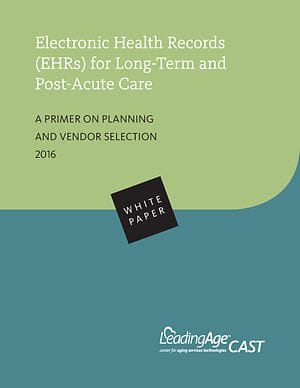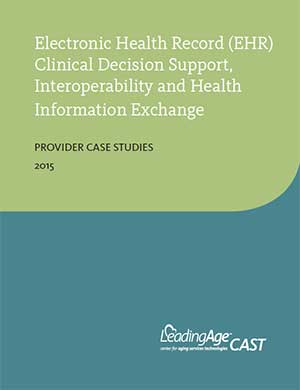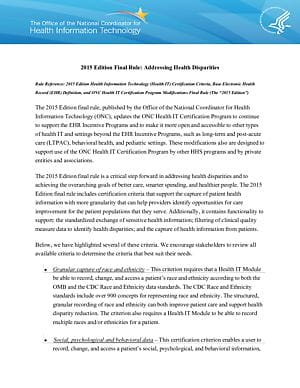In this section
Learn how to:
- Use health IT for long-term and post-acute care
- Improve care in rural areas
- Reduce health disparities
An organization’s approach to health IT varies by care setting and related care delivery needs. Although the primary audience for the Health IT Playbook is ambulatory care practices, this section includes tools and resources to support a variety of care settings with unique considerations for health IT implementation and adoption.
This section offers resources for:
- Long-term and post-acute care (LTPAC)
- Rural practices
- Underserved care settings




